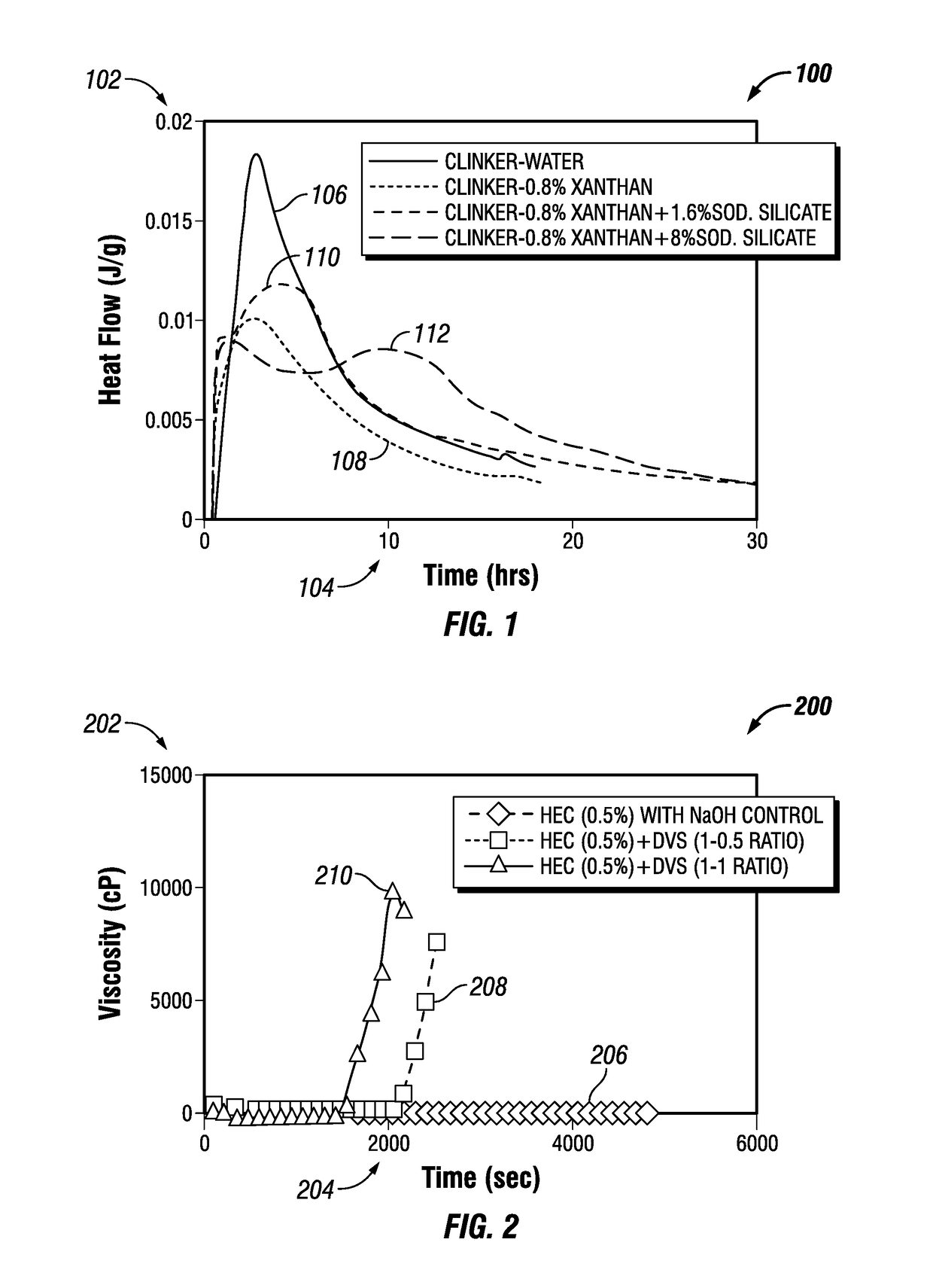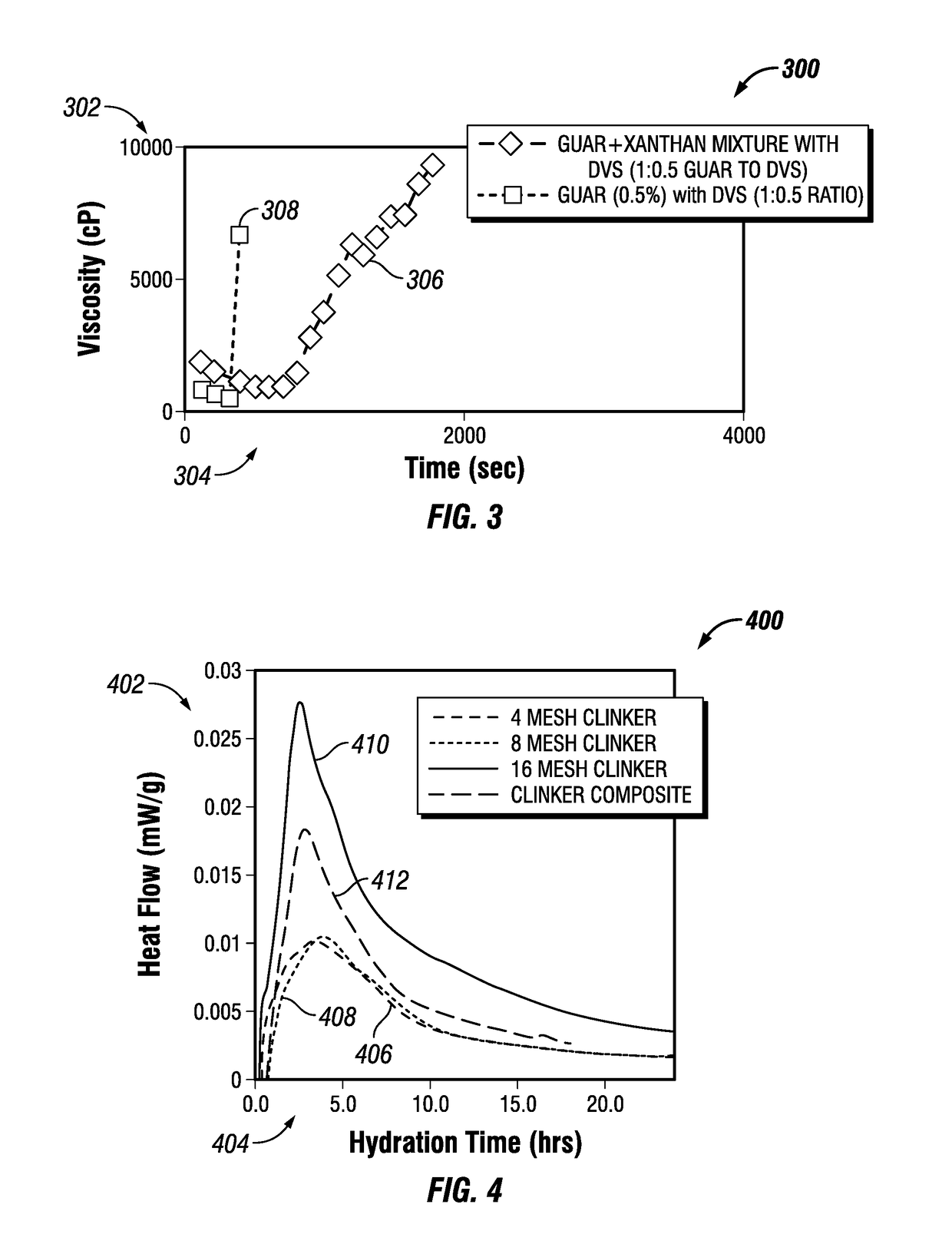Loss circulation compositions (LCM) having portland cement clinker
a technology of compositions and compositions, applied in the direction of wellbore/well accessories, sealing/packing, chemistry apparatus and processes, etc., can solve the problems of fluids used in drilling, completion, or servicing of wellbores that can be lost to the subterranean formation, and can be encountered with lost circulation, so as to reduce the rate of lost circulation
- Summary
- Abstract
- Description
- Claims
- Application Information
AI Technical Summary
Benefits of technology
Problems solved by technology
Method used
Image
Examples
Embodiment Construction
[0027]The present disclosure will now be described more fully with reference to the accompanying drawings, which illustrate embodiments of the disclosure. This disclosure may, however, be embodied in many different forms and should not be construed as limited to the illustrated embodiments. Rather, these embodiments are provided so that this disclosure will be thorough and complete, and will fully convey the scope of the disclosure to those skilled in the art.
[0028]As used herein, the term “cement clinker” or “Portland cement clinker” refers to a substance distinct from cement and formed during the manufacture of Portland cement during the cement kiln stage. As used herein, “cement clinker” or “Portland cement clinker” refers to non-hydraulic, non-cementiceous unground Portland cement clinker particles. As used herein, “cement clinker” or “Portland cement clinker” does not include conventional cement that is ground up to promote its reactivity with water to form set cement.
[0029]Emb...
PUM
| Property | Measurement | Unit |
|---|---|---|
| length | aaaaa | aaaaa |
| time period | aaaaa | aaaaa |
| aspect ratio | aaaaa | aaaaa |
Abstract
Description
Claims
Application Information
 Login to View More
Login to View More - R&D
- Intellectual Property
- Life Sciences
- Materials
- Tech Scout
- Unparalleled Data Quality
- Higher Quality Content
- 60% Fewer Hallucinations
Browse by: Latest US Patents, China's latest patents, Technical Efficacy Thesaurus, Application Domain, Technology Topic, Popular Technical Reports.
© 2025 PatSnap. All rights reserved.Legal|Privacy policy|Modern Slavery Act Transparency Statement|Sitemap|About US| Contact US: help@patsnap.com



